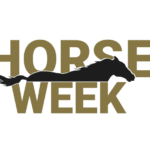June 16, 2009 — Virginia Cooperative Extension in conjunction with Technical Large Animal Emergency Rescue (TLAER) held a three-day emergency training program at the Middleburg Agricultural Research and Extension Center on May 13-15, 2009.
This training program, held at the MARE Center, taught emergency personnel, veterinarians, and other interested people what to do if they are called to the site of an emergency involving a large animal. Too often, good Samaritans with good intentions or untrained emergency rescue personnel are injured or hurt while trying to rescue large animals on the scene of an accident or disaster. One of the first things taught in this program is to call 911 if you happen upon a situation where large animals are in danger.
Participants and auditors attending this three-day event were trained how to perform various types of rescues using specialized equipment, along with two horses and one llama that travel with the large animal emergency rescue team across the country to train rescue personnel. One exercise focused on freeing a horse trapped inside a trailer via its lead rope. The rescuer was instructed how to use a long extension pole with clippers on the end to reach the trapped horse and cut the rope, thereby freeing the animal in a safe fashion. The extension poles may also be used to pass equipment without having to enter a confined space to rescue the horse.
When a large animal is trapped in a muddy pond or a deep ravine, it may be impossible to rescue without special equipment. Large animal rescue training demonstrates many types of rescue equipment that can be used to free a large animal in a manner safe for both human and animal. One apparatus used is an A-frame with a hoist lift. Rescuers were instructed to securely assemble the frame and to prepare the ropes so that the animal is lifted up securely. This rescue takes several teams of people on each end of the ropes to hoist the frame and then to begin lifting the animal to safety.
According to the instructors, most people who happen upon an accident will immediately dial 911 for emergency help; however, it is also a known fact that many emergency responders do not have proper training in large animal rescue. Therefore, many rescue personnel are participating in training such as the one recently hosted by the MARE Center, to enable them to be able to assist in such emergencies. Fire departments, rescue personnel and animal control officers who have training in large animal rescue will be equipped to help save animals in disasters or roadway accidents and will have the knowledge required to keep animal owners and good Samaritans out of harm’s way. Trained rescuers realize that if a large animal cannot be safely rescued, it will not be rescued.
Certainly, no one can predict when a disaster causing large animals to be injured or killed will strike, but we can be prepared. Large animals in dangerous situations often exhibited behaviors that could injure rescuers not properly trained. To learn more about TLAER, please visit www.tlaer.org
The three-day event held at the MARE Center, then repeated the next week at Virginia Beach Mounted Patrol, was sponsored in part by the Virginia Horse Industry Board as well as several other sponsors who made this event possible.
Virginia Tech’s Middleburg Agricultural Research and Extension Center’s mission is to advance the health and well-being of the horse through graduate education for equine professionals, nutritional and pasture management research, and community educational programs. Located in Middleburg, Va., the center is one of 13 Agricultural Research and Extension Centers located across the state that help serve the commonwealth’s agricultural needs.





